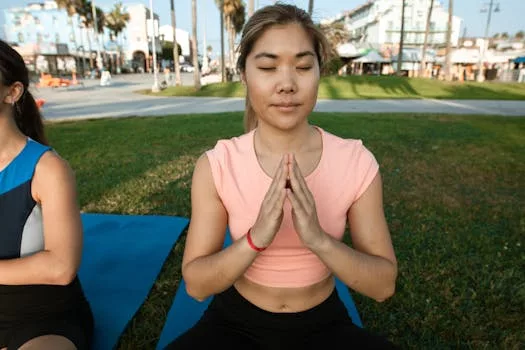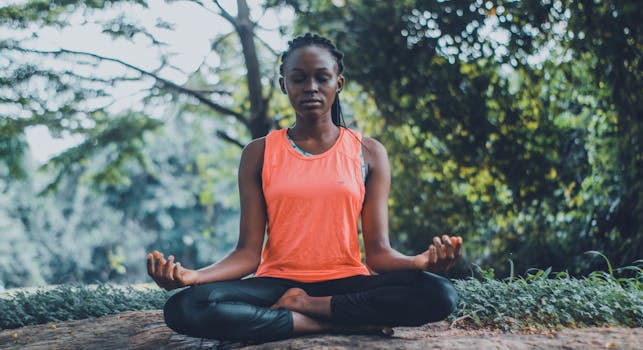
Unlocking Serenity: Essential Mindfulness Meditation Techniques
Takeaways: Mindfulness meditation is a powerful practice that helps individuals enhance their mental clarity, emotional balance, and overall well-being. This article delves into effective techniques that can be easily incorporated into daily life, making mindfulness accessible for everyone. Whether you’re a beginner or looking to deepen your practice, these strategies will help you unlock the benefits of mindfulness meditation.
In our fast-paced world, finding a moment of peace can often feel impossible. However, mindfulness meditation offers a pathway to tranquility and self-awareness. This article will guide you through various mindfulness meditation techniques that can be practiced anywhere, anytime.
Understanding Mindfulness Meditation

One of the primary goals of mindfulness meditation is to cultivate a heightened state of awareness. This means being fully present in your experience, whether it’s during a simple task like eating or a more complex situation like dealing with stress at work. By practicing mindfulness, you can learn to observe your thoughts and emotions objectively, allowing for better emotional regulation and reduced stress levels.
Basic Mindfulness Meditation Techniques

1. Breath Awareness
One of the simplest and most effective mindfulness meditation techniques is focusing on your breath. To practice this, find a comfortable seated position. Close your eyes or soften your gaze, and take a few deep breaths. Then, allow your breath to return to its natural rhythm.
As you breathe, pay attention to the sensation of the air entering and leaving your body. Notice how your chest rises and falls or the feeling of the air at the tip of your nose. If your mind wanders, gently bring your focus back to your breath. This technique can be practiced for as little as five minutes a day and can be extended as you become more comfortable.
2. Body Scan Meditation
The body scan is a powerful technique that helps you develop a greater awareness of bodily sensations. To practice a body scan, lie down in a comfortable position and close your eyes. Begin by focusing on your toes. Notice any sensations, tension, or relaxation in that area.
Gradually move your attention up through your body—your feet, legs, abdomen, chest, arms, neck, and head. Take your time with each part, observing how it feels without trying to change anything. This technique not only enhances mindfulness but also promotes relaxation and stress relief.
3. Walking Meditation
Walking meditation combines physical activity with mindfulness. This technique is particularly useful for those who find it challenging to sit still. To practice walking meditation, find a quiet space where you can walk back and forth. Begin by standing still for a moment, taking a few deep breaths.
As you start walking, focus on the movement of your feet. Feel each step as your heel touches the ground and then your toes lift off. Notice the sensations in your legs and the rhythm of your breath. If your mind starts to wander, gently bring your attention back to the act of walking. This practice can be a refreshing alternative to traditional seated meditation.
4. Guided Meditation
If you’re new to mindfulness meditation, guided meditations can be incredibly helpful. These are available through apps, online platforms, or in-person classes. In guided meditation, an instructor or recording leads you through the process, often incorporating visualization techniques and soothing sounds.
This method can help you stay focused and engaged, especially during the initial stages of your practice. Look for sessions that resonate with you, whether they focus on stress relief, self-compassion, or general mindfulness.
Incorporating Mindfulness into Daily Life

1. Mindful Eating
Mindful eating encourages you to slow down and savor your food. Instead of rushing through meals, take time to appreciate each bite. Notice the flavors, textures, and aromas. This practice not only enhances your enjoyment but can also lead to healthier eating habits.
2. Mindful Listening
When engaging in conversations, practice mindful listening. Focus entirely on the speaker, avoiding distractions and formulating responses in your mind. This helps you connect more deeply with others and enhances your communication skills.
3. Daily Mindfulness Reminders
Set small reminders throughout your day to pause and take a few mindful breaths. This could be when you arrive at work, during a break, or before bed. Over time, these moments will help you cultivate a more mindful approach to daily life.
4. Mindfulness Apps
Consider using mindfulness apps to guide your practice. Many apps offer a range of meditations, reminders, and resources to help you stay on track with your mindfulness journey.
Final Thoughts on Mindfulness Meditation







